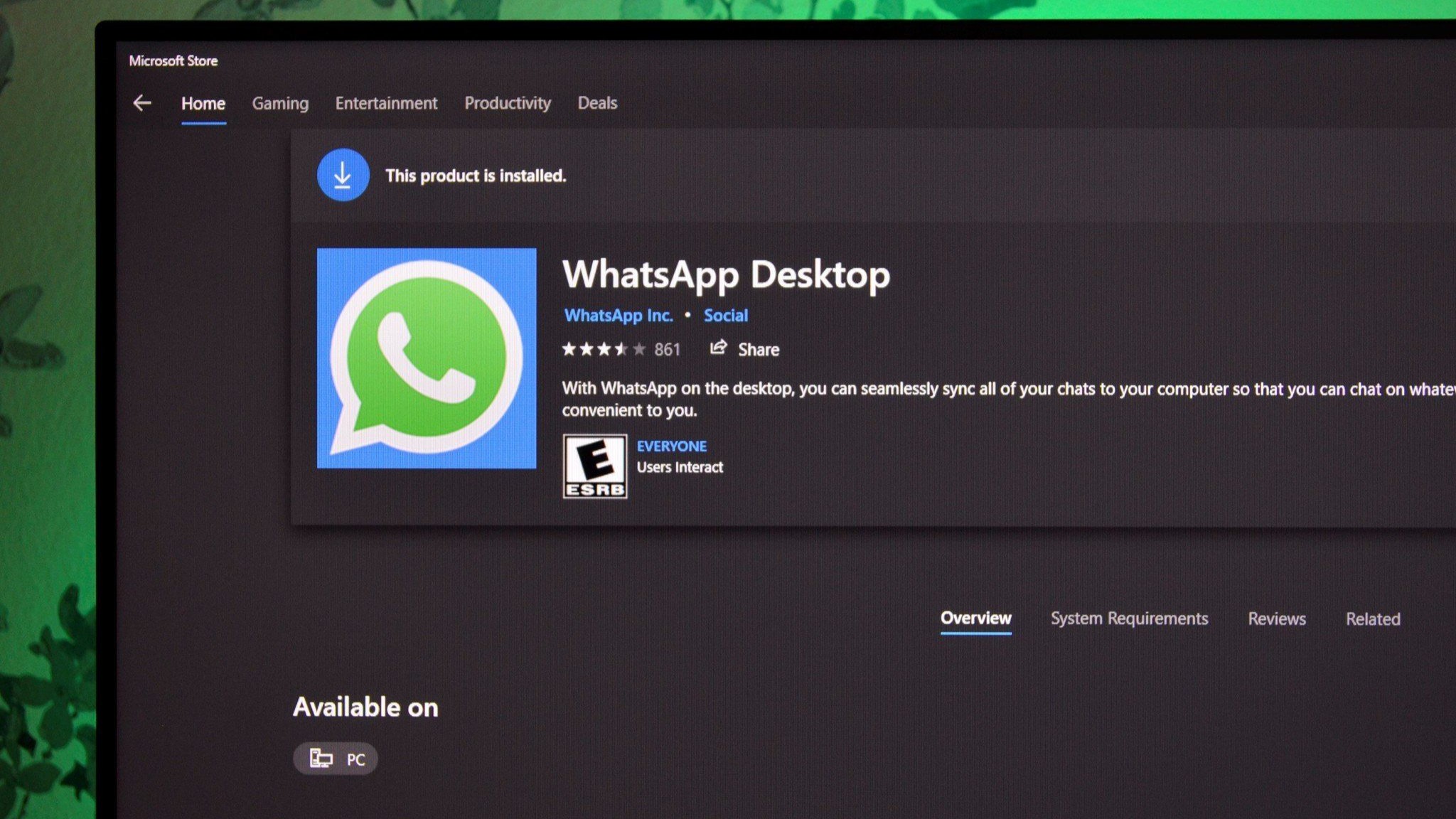What size gaming monitor should you buy?
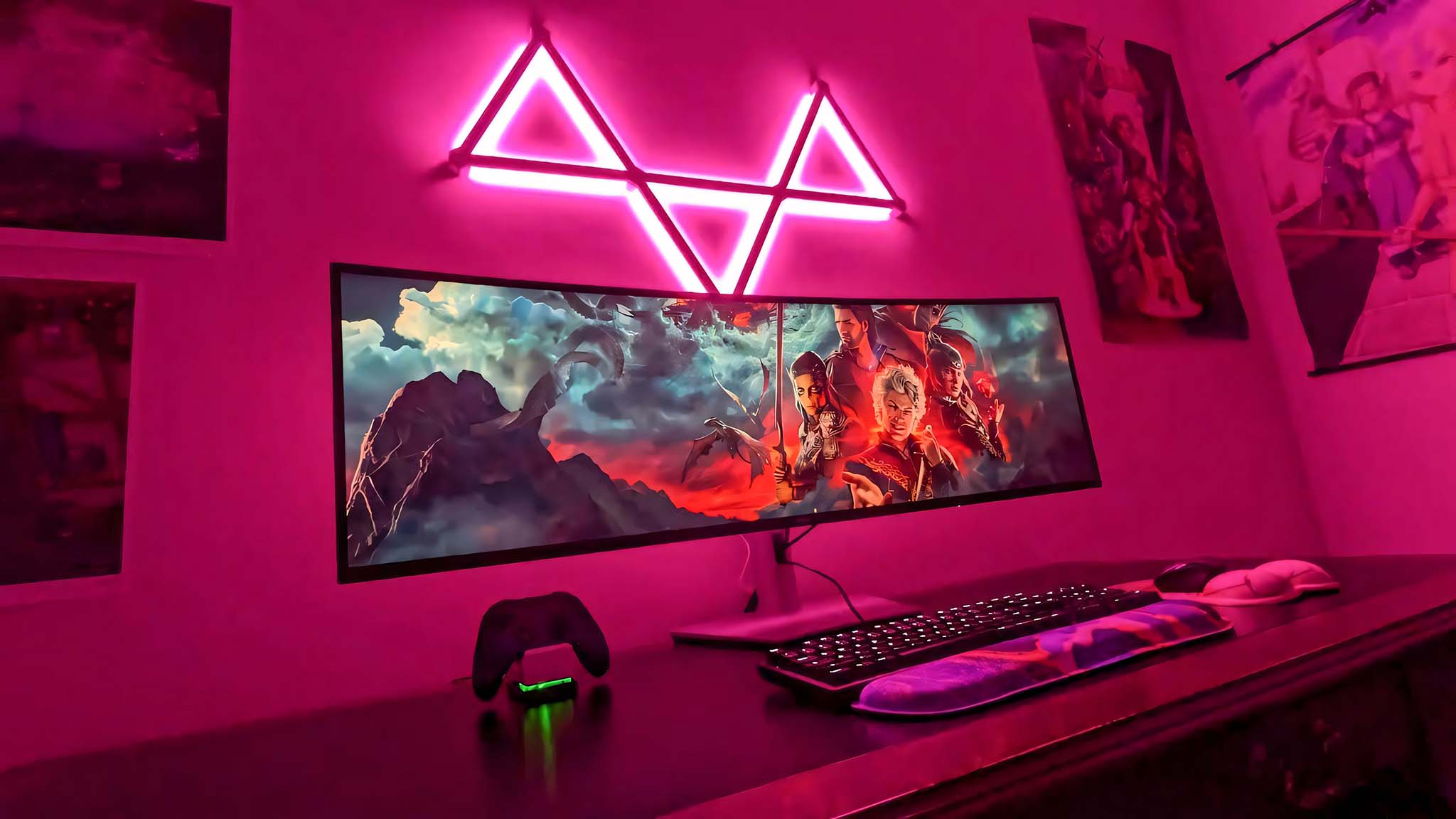
Gaming monitors keep improving to accommodate the power creep of PC performance hardware, and shopping for a new display can quickly become confusing. You don't want to buy too much screen for your PC to handle, you don't want to buy too little screen for your liking or favorite game genre, and you don't want to choose the wrong aspect ratio or size for your setup.
Typical gaming monitor sizes range from 24 inches up to 40 inches and beyond, with a bunch of different resolutions mixed in. In this guide, I'm focusing on monitor size in relation to resolution and game genres in the hopes that it'll help you get the perfect screen for your gaming PC.
Choosing a monitor size based on resolution
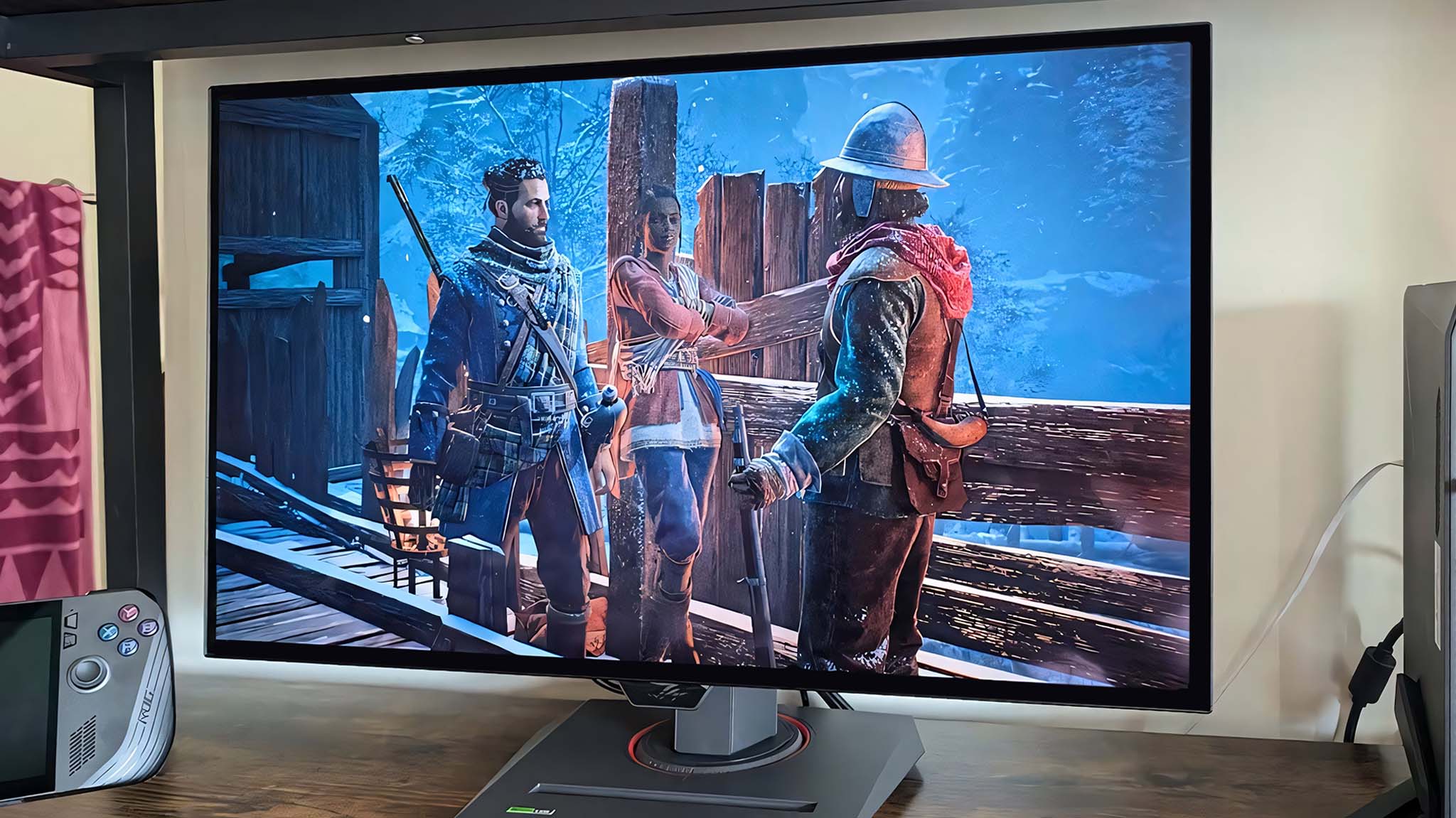
Before choosing a monitor size, you want to pinpoint what resolution works best for your PC's hardware. Want to balance high frame rates at 1080p? You'll no doubt want a different size display than if you were pushing the resolution to 1440p or 4K.
Only you know the true capabilities of your gaming PC. For example, if you've built a system with hardware designed for 1080p, buying a 1440p monitor won't do you or your PC any favors.
👀 What is Super Resolution? NVIDIA DLSS, AMD FSR, Intel XeSS, and Microsoft DirectSR explained
Your PC's hardware only has to work harder to display more pixels, and while you might notice extra clarity from the boosted pixel density, your frame rates will suffer, resulting in a choppy and undesirable experience. You also want to buy a monitor that supports your PC GPU's variable refresh rate. That's going to either be NVIDIA G-Sync or AMD FreeSync, and many monitors now support both.
In this section, I'll examine the preferred monitor sizes for popular gaming resolutions. But first, a quick breakdown of common terms you'll run into when shopping for a monitor.
- Full High Definition (FHD): 1920x1080, aka 1080p
- Quad HD (QHD): 2560x1440, aka 1440p
- Ultra HD (UHD): 3840x2160, aka 4K
- Pixels-per-inch (PPI): The number of pixels in a one-inch line on your display
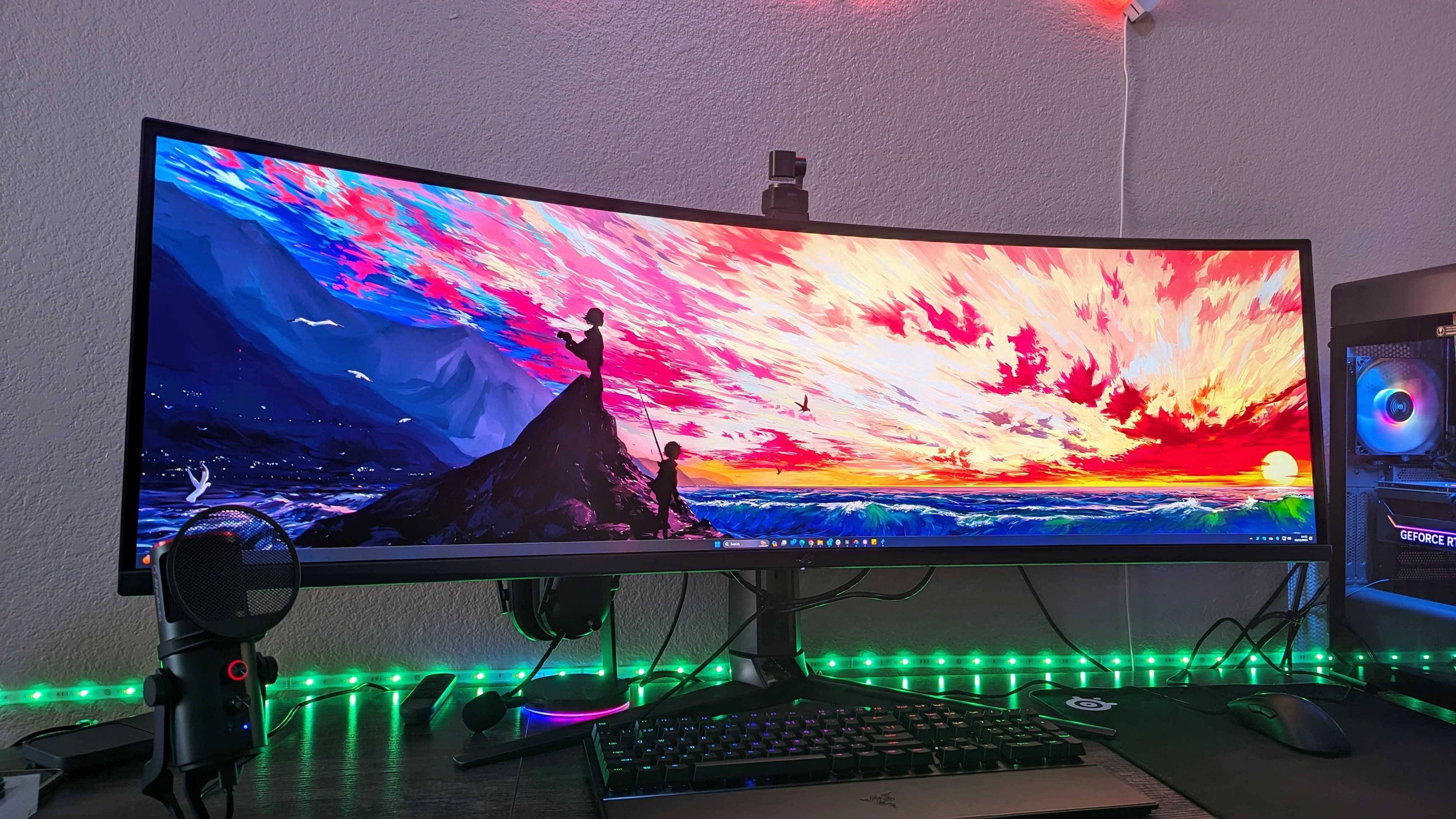
Best gaming monitor size for 1080p
Why you can trust Windows Central
The best monitor size for 1080p (FHD) gaming is typically 24 inches. With the help of a trusty pixels-per-inch (PPI) calculator, a 24-inch monitor with a 1920x1080 resolution equates to 91.79 PPI. That's not bad at all in a real-world situation, and you can expect enough clarity for even competitive titles. A 24-inch monitor at 1080p is also generally going to be very affordable.
Bumping the size up to 27 inches drops the density to 81.51 PPI, which for some people is enough. However, this size is big enough that you'll notice some blurriness at 1080p.
Refresh rates are usually among the highest on a 1080p monitor. Your PC doesn't have to work as hard to display a smaller number of pixels, so frame rates can climb higher.
👀 Titan Army P2510S budget gaming monitor review: 240Hz, 1ms, and a great budget choice
Best gaming monitor size for 1440p
The best monitor size for 1440p (QHD) is typically 27 inches. Though the screen is only growing diagonally by about three inches compared to a 24-inch monitor, a 2560x1440 resolution bumps density up to 108.79 PPI.
This is the "sweet spot" for most PC gamers, including many on the Windows Central team. The extra screen size might not be ideal if you're into competitive shooters where you need to see every part of the display simultaneously, but it's otherwise a near-perfect compromise for most gamers.
1440p monitors can also commonly be found in a 32-inch size, which drops the density down to 91.79 PPI. That's the same density as a 24-inch monitor at 1080p; it's certainly doable, but if clarity is at the top of your list, I'd stick with 27 inches. As with any monitor, try to get the highest refresh rate possible while keeping within your budget. You'll see a lot of 27-inch QHD monitors come with a 144Hz refresh rate.
Best gaming monitor size for 4K
The best monitor size for 4K (UHD) is typically 32 inches and above. At 32 inches, the 3840x2160 resolution hits a density of 137.68 PPI, providing ample clarity and definition. As mentioned, you'll want to have a beefy PC to run a 4K display, otherwise you'll be wasting your money.
Looking at a 34-inch 4K display, the density hits 129.58 PPI. That's still considerably better than a 27-inch monitor at 1440p. Even at 40 inches, a 4K monitor's 110.15 PPI density is superior.
You'll also find 27-inch monitors with a 4K resolution. The 163 PPI density is awesome, but I recommend taking advantage of the extra pixels to cover a larger screen. Refresh rates in 4K monitors are breaking out of the 60Hz range, and you can now easily find triple-digit rates to go along with the higher resolution. At 4K, you'll need a powerful PC to maintain high refresh rate in demanding games.
👀 This $1,300, 240Hz OLED gaming monitor would be perfect if something didn't keep falling off
How distance affects size and resolution
The right monitor size for you also depends on how you set up your gaming area. I typically sit at a desk when I game, but I know that's not the reality for everyone.
In my case, the 34-inch ultrawide screen (with extended 3440x1440 resolution) is great for work, but in some genres (more on this below) it feels a bit too big when I'm only about three feet away from it. It's most noticeable in first-person shooters due to the fast action and the need to scan all areas for threats.
Anything in the 24- to 32-inch range should work well on a desk. If, on the other hand, you're setting up your gaming monitor in a more relaxed setting — say with a couch on the other side of the room — bumping the size up to 40 inches or beyond and hitting a 4K resolution is recommended.
What aspect ratio do I want?
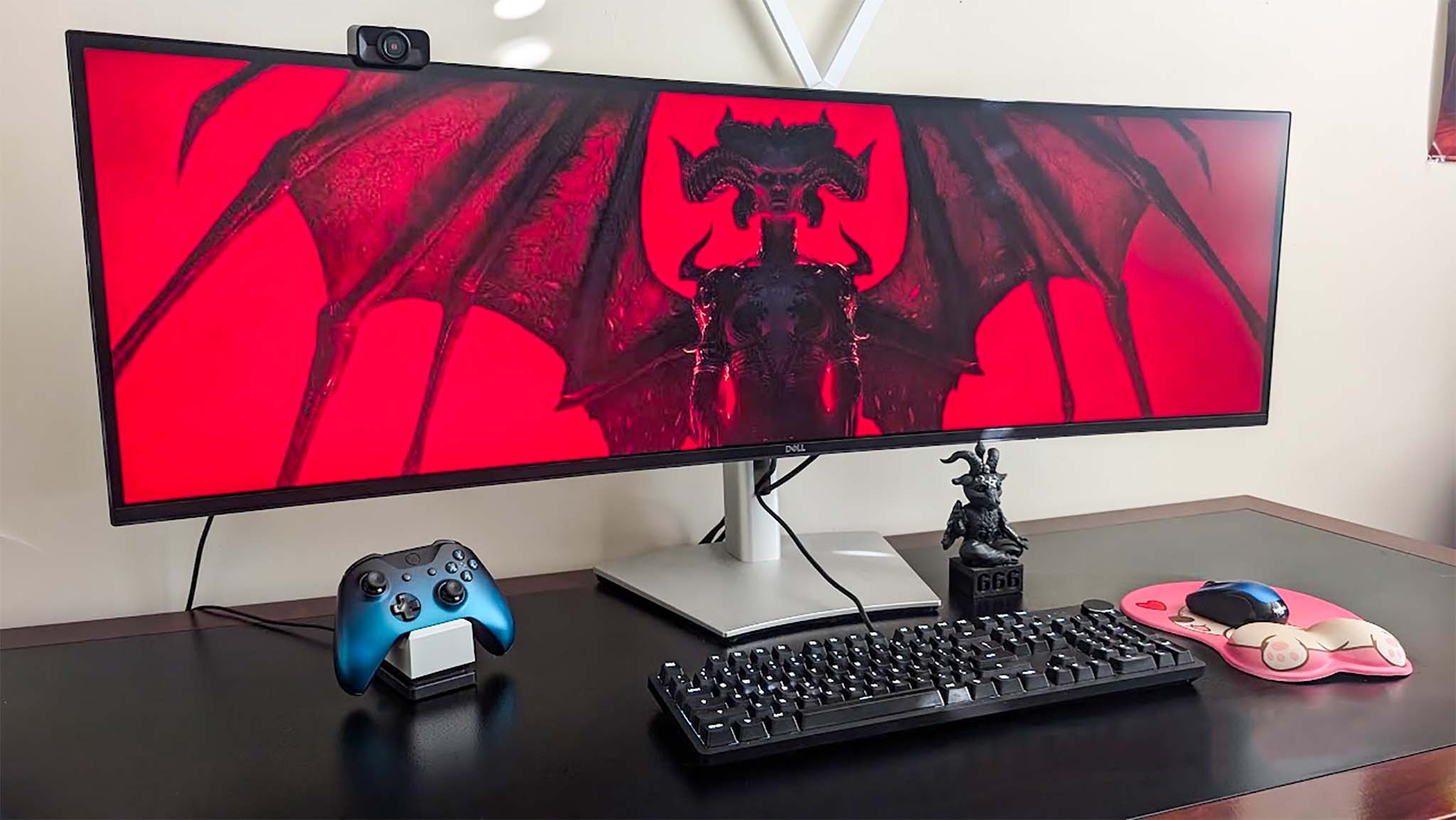
Gaming monitors commonly come with a 16:9 aspect ratio. It's the standard across all external monitors, though some productivity-focused screens are now offering a taller 16:10 ratio. As for laptops, the trend now is 16:10, with some PCs — like the Surface Pro 11 — opting for 3:2.
Ultrawide monitors buck the trend by extending the picture horizontally. Many ultrawide monitors have a 21:9 aspect ratio, typically with a 3440x1440 resolution. The premium stuff can go up to 32:9 with something like a 5120x1440 resolution. The vertical resolution usually won't differ much compared to a 16:9 screen.
Ultrawides are useful if you don't want more than one monitor on your desk, and they're also very handy for productivity purposes. What aspect ratio you need will mostly depend on what games you play, and there's more information on genres below. Keep in mind that ultrawides take up a lot more space, which might already be reserved for your other PC gaming accessories.
What panel type should I get?
Gaming monitors commonly come with IPS and VA panel types. The former offers better viewing angles, better color, and fast response times, while the latter offers excellent contrast and is usually more affordable.
But these aren't the only two panel types. We're now seeing more OLED and mini-LED gaming monitors enter the market. They're relatively expensive, but they blow IPS and VA panels away in terms of color and contrast. I still use an IPS monitor on my desk, but after testing a bunch of laptops with OLED, I plan on upgrading in the near future.
My colleague Rebecca Spear has written an in-depth guide on OLED vs. QD-OLED vs. QLED vs. AMOLED vs. Mini-LED with a ton of great information that can help you decide on what's best.
Do I want a curved or a flat screen?
The larger the monitor, the more chance you'll find options with a curved display. While a curve certainly isn't necessary — and becomes detrimental to a multi-monitor setup — it's a feature that can improve immersion with better viewing angles.
Making the change from a flat display to a curved display is noticeable at first, but you'll quickly become accustomed when gaming. Return to a flat display, and it'll seem like it's curving in the opposite direction.
I highly recommend a curved display if you're shopping for an ultrawide monitor. Flat ultrawides are relatively rare, so chances are you won't have a big decision to make.
Best monitor size by game genre

Laying out the ideal resolutions for different screen sizes is one thing, but the types of games you play also have an effect. Gamers focused on one genre will have an easier time choosing a monitor. However, if you're like me and play all sorts of games, you might have to make some compromises.
In my case, the ultrawide monitor on my desk is ideal for strategy games, RPGs, city builders, and racing/flight sims. On the other hand, jumping into a Tarkov raid or enjoying some Battlefield 1 (yes, 10 years after its launch) can be overwhelming. It's often tough to track everything going on with so much screen real estate in front of me.
When I played Counter-Strike competitively years ago, I swore by a 24.5-inch screen. Now, however, an ultrawide is perfect for work and for less competitive games of all genres. Here's a closer look at some of the most popular genres and what size of gaming monitor is best.
First-person shooters
First-person shooters, especially those of a fast-paced, competitive nature, play best on a smaller monitor. Think somewhere around 24 or 27 inches. This prevents you from having to scan too large of an area to pick up targets; there's a good reason why competitive teams don't use huge monitors. Aim for a high refresh rate and a low response time for best results.
Action, adventure, and RPG
RPGs, which often rope in exploration, survival, and action, are well suited for larger monitors. RPGs usually attempt to immerse you in a different world, and they often have beautiful graphics.
A larger display (think 27 inches or larger) with a higher resolution will only improve your experience here. This is also where ultrawides really start to show their usefulness.
Simulation, strategy, and MOBA
Simulation, strategy, and MOBA games are in the same vein as RPGs. Having more screen space for titles like Anno 1800, Diablo, and Age of Empires (some of my favorites) only makes these games better.
Consider an ultrawide or at least something sized 27 inches or larger if you usually play sim and strategy games. A higher resolution also can't hurt, since it's less important to hit a high refresh rate.
Racing
Racing games and flight sims benefit most from an ultrawide display. Having extra screen space ups the immersion as if you're looking through a windscreen, and you also want to have a high refresh rate if you're racing competitively. I say the bigger, the better for these types of games.
All the latest news, reviews, and guides for Windows and Xbox diehards.

Cale Hunt brings to Windows Central more than nine years of experience writing about laptops, PCs, accessories, games, and beyond. If it runs Windows or in some way complements the hardware, there’s a good chance he knows about it, has written about it, or is already busy testing it.
